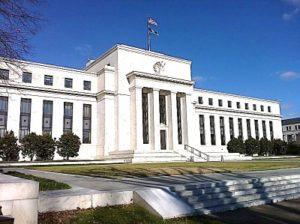Bagehot’s free banking naiveté
Do we need central banks, and if so, why?
Asad Zaman
Chapter 2 of Goodhart’s Evolution of Central Banks cites in detail several arguments made by Bagehot in favour of a free banking system operating with- out a Central Bank. After listing them,
he notes that Bagehot is “engagingly naïve”, as a gentle critique. It is astonishing that a hard-nosed practical financial analyst like Bagehot would indulge in such visionary daydreams about a “free market” system. This testifies to the power of ideology to blind one to the faults of idolized system. The following are some of the “naïve” arguments advanced by Bagehot in favour of free banking:
- In a competitive free banking system, every bank would maintain adequate reserves, to create credibility
- Also, in case of financial panics, they would lend to distressed banks, in order to protect the financial system.
- Such a system of multiple reserves (with each bank maintaining a stock of its own reserves) would be superior to a centralized system, where only one institution keeps reserves, due to the benefits of competition over monopoly.
Goodhart shows that this starry-eyed idealization of free banking is contradicted by Bagehot’s own experience in the context of the workings of central banking systems. Before discussing

Goodhart’s critique of the arguments of Bagehot, we pause for an explanatory note about “adequate reserves”, which is needed for those who are unfamiliar with banking operations.
Explanation of adequate reserves
In modern banking systems, each bank keeps at hand only a small fraction of the hard currency that it has promised to pay on demand to creditors. If all of the creditors demand what the bank has promised, this creates a financial crisis. The more reserves a bank has, the less likely it is that a crisis will occur. However, the profits of a bank depend heavily on its making large numbers of loans without any support for them in the form of bank reserves. So banks have a profit incentive to keep as few reserves as possible. Thus the motive to maintain commercial credibility by keeping a large quantity of reserves opposes the profit motive which calls for having few reserves.
Goodhart’s critique states that while Bagehot thinks that banks will maintain adequate reserves for credibility, else- where he explains that maintaining “large amounts of solid gold” is costly, so banks have every incentive to place their reserves at the Central Bank. This again suggests that Central Banking is a natural requirement of a commercial banking system, rather than a forced imposition by government, which cuts into their freedom and profits. Both the experience and theory of banking suggest that (1) is false – banks would not maintain adequate reserves in a free banking system owing to the cost and care required for doing so.
Similarly, Goodhart argues that (2) is also false. Crises are inevitable in modern banking, because the public knows that when there is a run on the banks, the latecomers will not get any money, and therefore rush to be the first. In such times, the best remedy is to restore the confidence of the public that adequate reserves are present to support all demands for cash. One of the great advantages of Central Banking is that it is always present as a lender of last resort — in a crisis, all private banks can rely on receiving the reserves they require from the Central Bank. In the absence of Central Banks, Bagehot suggests that the banks would lend to each other freely in times of crisis, thereby obviating the need for a large Central Bank. However, banking experience cited by Bagehot himself suggests that this is false: “(Lombard Street, p. 290): At such moments [i.e. panics] all bankers will be extremely anxious, and they will try to strengthen themselves by every means within their power; they will try to have as much money as possible at their command; they will augment their reserve as much as they can, and they will place that reserve at the Central Bank.” Their self- preservation instincts would prevent banks from lending freely to each other, as a replacement for the Central Bank function of lender of last resort. Further- more, Bagehot seems to be aware of this.
Similarly, supposition (3) in favour of free banking is false. Goodhart cites another leading economist of the time, Henry Thornton, who discusses what would happen if there were two big banks instead of one. He writes that both would be tempted to rely on the presence of the other for crises, and go for the profit opportunities created by lower reserves. Thornton also lists several advantages of having one Central Bank, which include reputation, regulation of smaller banks, and others. Thus, it seems that Central Banking is not a government imposition upon commercial banking system, but rather an essential requirement for the functioning of such a system.
This conclusion, which emerges from historical experience, is unpleasant to ideological free marketeers because it demonstrates that a free market system absolutely requires regulation, supervision, and government assistance in order to function. The conclusion is in opposition to prevailing ideology, which asserts that unregulated free markets work best, and that all types of government interference in the operation of the system only harm the efficiency of the system.
Sources:





























